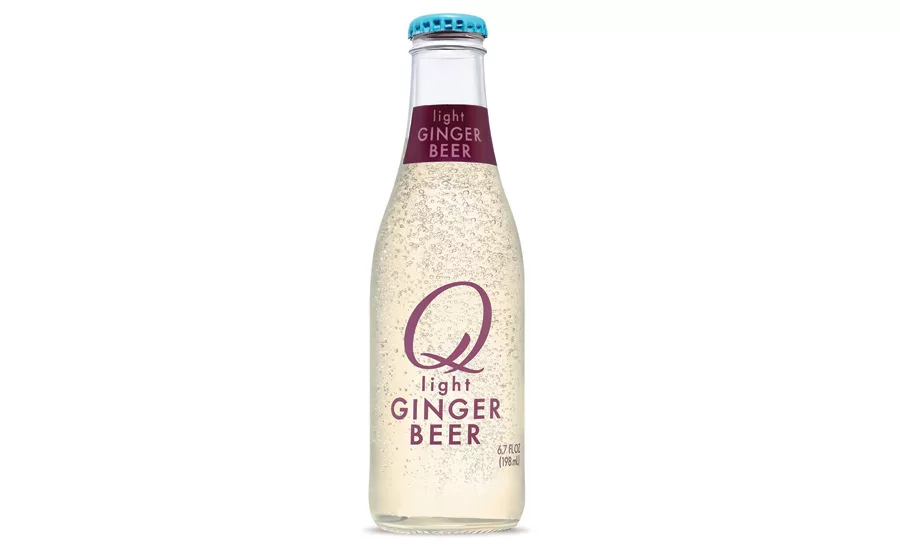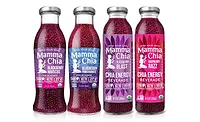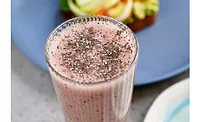Flavor houses supporting beverage sugar-reduction trends
Healthy-halo flavors see increased demand

When decorating one’s first home, the phrase “less is more” often is celebrated by minimalist designers who are encouraging homeowners not to overdo it when it comes to décor. In the beverage market, less is more is taking on another meaning as more consumers are seeking beverages that contain less sugar. Yet, as beverage formulators adjust to these evolving palate trends, flavor houses are recognizing the new normal of providing low- and no-sugar products while still preserving taste profiles.
“With 71 percent of consumers looking at the sugar content on the nutritional facts panel the consumer drive for sugar reduction has, and continues to, greatly impact the beverage market,” says Nina Riggins, marketing manager of Taste for Kerry, Beloit, Wis., citing 2017 Kerry Primary Research. “Consumers want reduced sugar products, but aren’t willing to sacrifice on taste. Therefore, taste solutions are critical in navigating the complex space of reduced sugar beverages. Some of these challenges can be tackled with a combination of natural flavors and extracts with flavor modulation tools that restore sweetness perceptions and mouthfeel that is lost in reduced sugar beverages.”
Andy Campbell, beverage business director for Lebanon, Ohio-based MANE Inc., highlights the importance of this issue and how flavor suppliers are tackling the challenge. “Consumers are looking to avoid sugars now, more than ever before,” he says. “Consumers understand they may have to sacrifice taste for less sugar, though they won’t always choose the lower sugar option. The more we can match the ‘less sugar’ taste experience with the ‘full sugar’ taste experience, the more consumers we will attract. Bringing the holistic consumer flavor experience through taste modulation technology is the future approach for solutions in this space.”
Natalie Kansler, insights and content manager for McCormick Flavor Solutions, Hunt Valley, Md., notes that sugar reductions is disrupting the market, pushing innovators to “think beyond the norms” as they develop flavor solutions.
“When reducing or substituting sugar with other sweeteners, like coconut nectar for example, there are opportunities for different complementary flavor profiles,” she says. “For example, combining our FlavorFull sweetness-enhancing technology with a pear elderflower flavor, our product developers were able to create a botanical-inspired spirit that tastes sweet despite its low sugar content. This trend has also provided a pathway for new complex profiles, like savory, herbal, and sour, in a traditionally sweet category.”
Jeff Underwood, director of innovation for Doehler North America, highlights how flavor houses are developing solutions to create sweetness but without the use of artificial sweeteners, including the Cartersville, Ga.-based company. “At Doehler, we offer an ingredient called MultiSense Sweet, which provides the sensory experience of sweetness (around 0.5 percent brix) without altering the actual brix level, or adding additional calories,” he says. “Since MultiSense Sweet is created from natural extracts it allows for an authentic mouthfeel without the additional of additives and is label as a natural flavor.”
Michael Crain, senior flavorist for Comax Flavors, Melville, N.Y., also notes the efforts that flavor suppliers are taking to support sugar-reduction trends. “Many flavor houses have either developed new or improved their existing functional flavor portfolios like mouthfeel modifiers or sweetness enhancers to help their customers achieve better tasting products with consumer appeal after the reduction/replacement of sugar,” he says.
Healthy halo flavors
In line with sugar reduction has been development of better-for-you beverages. Like the active functional ingredients that fuel these beverages, the flavor choices are aligning with these trends, experts note.
“Flavors such as florals, herbs, name of origin flavors, and superfruits are very popular because they tend to fall under the ‘health halo’ and have a natural association that pairs well with a clean-label beverage,” says Jose Diaz, beverage technologist for Wauconda, Ill.-based Synergy Flavors Inc. “Additionally, fruit flavors, particularly citrus flavors as well as those that are less common varieties and perhaps native to other parts of the world, have picked up momentum in these beverages.”
Kerry’s Riggins’ also notes that various flavors have benefited lately from the healthy halo designation.
“There are a variety of flavors that are gaining traction within the beverage category due to their perceived functionality and benefits,” she says. “Ginger is one of those health halo flavors, with 39 percent of consumers who believe immune health to be important, linking ginger to immunity and 35 percent of consumers concerned with gut health, linking ginger to it.
“Floral flavors are also seeing an increase in beverages due to their health associations in categories such as mood management and sleep support,” Riggins continues, citing 2019 Kerry Proactive Health Research.
McCormick’s Kansler notes how botanical flavors support the better-for-you trends that are permeating the beverage market.
“These flavors add herbal, bitter and even sweet notes, which make for a complex and delicious overall profile for beverages,” she says. “At McCormick Flavor Solutions, botanical flavors we see emerging right now are cardamom, lavender and rose. Another flavor profile that has grown out of better-for-you trends are those that are sour and tangy, which we believe is driven by kombucha’s increasing popularity.”
Superfood designations also are providing a bump to various flavors, including traditional and domestic flavors. “For instance, you might find an acai strawberry flavored beverage with an acai flavor but no actual acai juice or pulp,” Doehler’s Underwood says. “In this case, a consumer might actually be choosing the beverage for that flavor profile as well as the healthy halo.”
MANE’s Campbell highlights how better-for-you flavors can stem from refreshing, recognizable favorites. “Consumers are interested in light and vibrant flavors,” he says. “Citrus flavors are classics in the beverage space, and many brands are pairing a citrus flavor with another flavor to make the flavor both new and known. Certain flavors are seen by consumers as more natural, such as vanilla, honey, and botanicals.”
In line with the healthy-halo trend, clean label has had an increasing impact on the flavors market.
“Many brands have shifted toward named ingredients and natural flavors,” Campbell says. “Consumers appreciate seeing the ingredients on the label, while manufacturers use flavors to enhance the included ingredients with consistency in taste, price, and availability.”
Comax’s Crain highlights the importance that flavors support the clean-label approach that a brand is communicating.
“Product developers often want simple, back-to-nature, but good tasting flavors to complement their increasingly simplistic products,” Crain says. “Flavor developers are looking to create similar, cost effective flavor profiles to meet these demands.”
Doehler’s Underwood echoes similar sentiments. “The push toward ‘clean label’ has certainly been a focal point in our industry recently and we have seen where companies, and consumers for that matter, are actively working to define ‘clean label,’” he says. “At Doehler, we are focusing on delivering flavor using the best of what nature has to offer using gentle manufacturing processes in the form of extract, essence and real fruit juice so we can state extractives of the named source on the label.”
The demand for functional, healthy beverages will continue to impact the flavor market, experts note.
“We can expect to see more variety in floral and botanical flavor profiles in the near future, especially as consumers continue to demand better-for-you alternatives that promote health and holistic well-being,” Synergy’s Diaz says. “Functional beverages will continue to saturate the market place as personalized health continues to grow.
“One area of functionality that we can expect continuous growth is prebiotic-fortified and probiotic-enhanced beverages that target ‘gut health,’” he continues. “A rise in plant-based diets and desire for increased sustainability will continue to influence the market presence of plant-based beverages and ingredients such as coconut, nuts, pea, hemp and oats.”
Quality indulgence
Although better-for-you beverages might command the lion’s share of new product development, beverage-makers still know that consumers want decadent products.
“Though better-for-you alternatives still drives consumer purchasing behavior, the increasing interest in quality ingredients over calorie content could predict a potential rise in indulgent product offerings, assuming the product uses premium, wholesome ingredients,” says K.C. Kuder, marketing associate for Synergy Flavors.
Kerry’s Riggins details that indulgent flavor offerings have evolved in terms of elaborateness and beverage category inclusion.
“Indulgent flavors continue to have a home within traditionally indulgent categories such as nutritional beverages and alcohol,” Kerry’s Riggins says. “However, we are seeing these indulgent flavors become more sophisticated, moving beyond the traditional chocolate or vanilla profiles. Some of this sophistication comes from the story behind the flavor such as the origin. We are also seeing indulgent flavors being paired with non-traditional profiles such as spice. This gives a known flavor an interesting spin.”
Although indulgent beverage flavors might be more intricate than in previous years, consumers still have an affinity for the classics.
“Consumers are looking for a balance between exploring new taste experiences and grounding themselves with nostalgic flavors of the past,” says Anu Fisher, marketing analyst for Downers Grove, Ill.-based Flavorchem Corp. “Novelty flavors like salted caramel, cinnamon bun, chocolate brownie and birthday cake lend themselves to innovations in various beverage applications including dairy creamers, RTD coffees, colas, energy drinks and yogurt smoothies. Formulators are hoping that consumers’ familiarity with nostalgic flavors will make them more accepted in unexpected applications.”
Comax’s Crain also highlights the opportunities that low-calorie beverages can realize through traditional indulgent flavors.
“The ability to offer flavor mixes/blends of sweet brown profiles such as caramels, peanut butter, chocolate, maple, marshmallow and various nut profiles, for example, allow consumers to experience the traditional indulgent taste experience without the extra calories as formulated by product developers for their beverage and food products,” he says.
Doehler’s Underwood also details how traditional indulgent flavors can further the better-for-you beverage market. “The trend for healthy indulgence continues to grow,” he says. “It is really the best of both worlds, which allows for the full enjoyment of a traditional indulgent beverage, but due to the healthy swap of ingredients, a consumer feels less guilty in partaking.”
McCormick’s Kansler points to dairy alternatives as the category that seems to be embracing healthy indulgence.
“Nut milks — like cashew, almond, coconut and oat milks — have become increasingly popular,” she says. “Along with kefir, which delivers gut-boosting benefits and a tangy indulgent flavor, we’re also seeing popularity around good fats like avocado, coconut and chia seeds. Our product developers recently created a turmeric carrot cake non-dairy smoothie featuring warm notes of cinnamon, nutmeg and ginger, as well as a creamy and fatty mouthfeel, which play into this trend.” BI
Looking for a reprint of this article?
From high-res PDFs to custom plaques, order your copy today!









